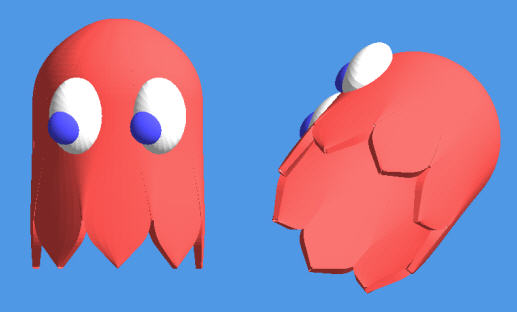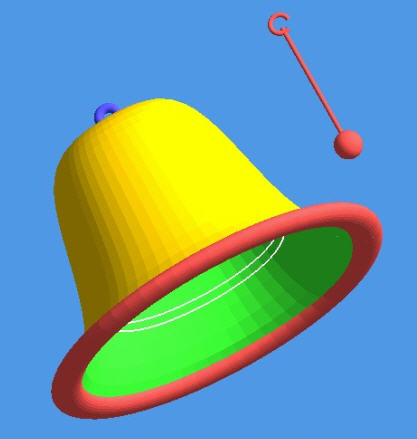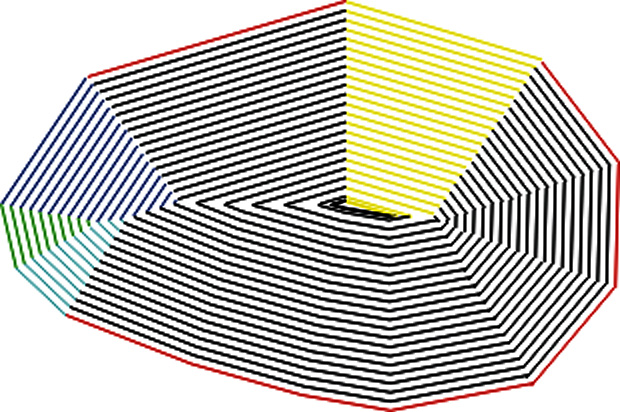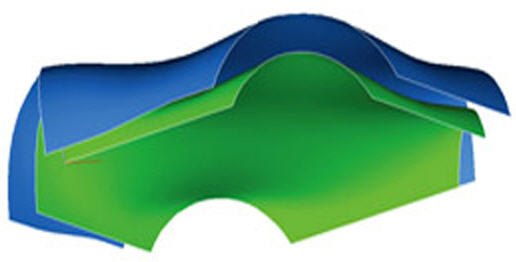






SLF_OFFSET_ANGULAR |
This offsets the control mesh inward and outward. Each facet in the control mesh will map to two facets in the offset mesh. Each boundary edge will map to a quadrilateral. The control mesh does not have to be a closed polyhedron. | |
SLF_OFFSET_PERFORATED |
In this offsetting technique, the edges of the control mesh are viewed as infinitely thin wires which are then thickened in an angular way. The control mesh does not have to be a closed polyhedron. |